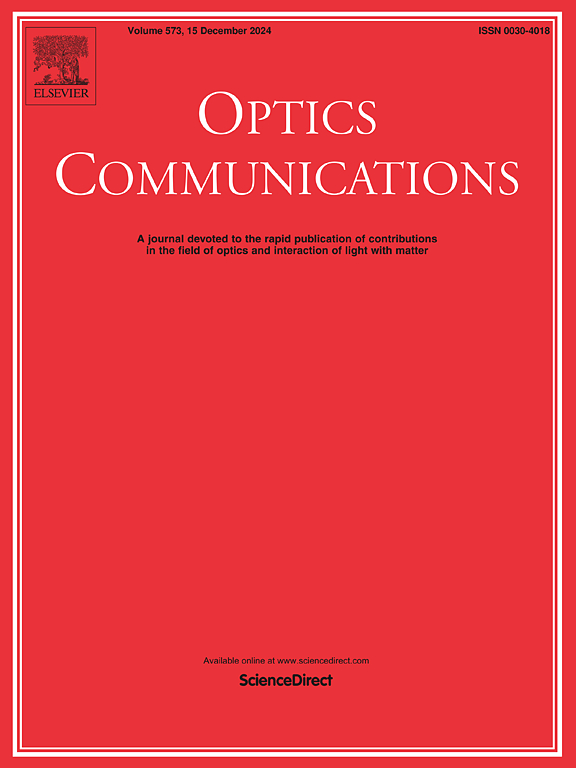Floquet合成网格晶格中的塔尔博特效应
IF 2.5
3区 物理与天体物理
Q2 OPTICS
引用次数: 0
摘要
本文对由两个互耦光纤环实现的Floquet合成网格(SMLs)中的时间Talbot递推进行了数值研究。通过在纵向上引入周期性相位调制,我们产生了Floquet sml,其中注入周期性脉冲序列可以实现塔尔博特恢复。Talbot效应的存在与Floquet周期、注入脉冲的间隔和输入光的初始相位密切相关。塔尔博特距离可以通过周期相位调制。但是,一旦输入光的脉冲间隔和初始相位满足Talbot条件,则Talbot距离是固定的。此时,改变光纤耦合器的劈裂比对系统的塔尔博特距离没有影响。该研究有助于理解Floquet系统中的Talbot效应,并在时间隐形、脉冲重复率倍增、无源放大和光子滤波等方面具有潜在的应用前景。本文章由计算机程序翻译,如有差异,请以英文原文为准。
Talbot effects in Floquet synthetic mesh lattices
We numerically investigate the temporal Talbot recurrence in Floquet synthetic mesh lattices (SMLs) realized by two mutually-coupled fiber loops. By introducing periodic phase modulation along the longitudinal direction, we generate Floquet SMLs, where Talbot revival can be achieved by injecting a periodic pulse train. The existence of the Talbot effect is closely related to the Floquet period, the interval of the injected pulses, and the initial phase of the input light. The Talbot distance can be modulated by the periodic phases. However, once the pulse interval and initial phase of the input light satisfy the Talbot condition, the Talbot distance is fixed. At this point, changing the splitting ratio of the fiber coupler has no impact on the Talbot distance of the system. This study contributes to the understanding of Talbot effects in Floquet systems and has potential applications in temporal cloaking, pulse repetition rate multiplication, passive amplification, and photonic filtering.
求助全文
通过发布文献求助,成功后即可免费获取论文全文。
去求助
来源期刊

Optics Communications
物理-光学
CiteScore
5.10
自引率
8.30%
发文量
681
审稿时长
38 days
期刊介绍:
Optics Communications invites original and timely contributions containing new results in various fields of optics and photonics. The journal considers theoretical and experimental research in areas ranging from the fundamental properties of light to technological applications. Topics covered include classical and quantum optics, optical physics and light-matter interactions, lasers, imaging, guided-wave optics and optical information processing. Manuscripts should offer clear evidence of novelty and significance. Papers concentrating on mathematical and computational issues, with limited connection to optics, are not suitable for publication in the Journal. Similarly, small technical advances, or papers concerned only with engineering applications or issues of materials science fall outside the journal scope.
 求助内容:
求助内容: 应助结果提醒方式:
应助结果提醒方式:


